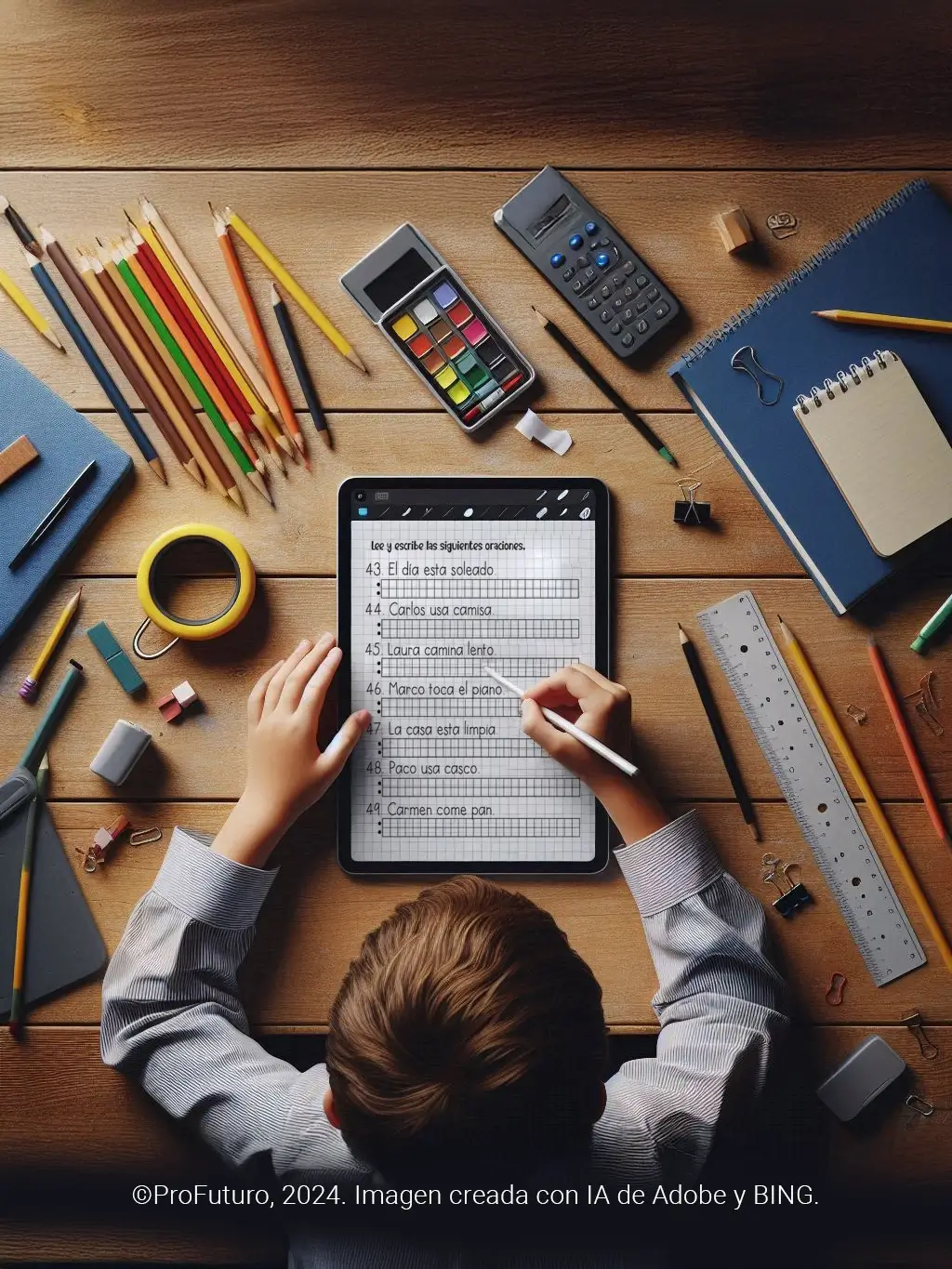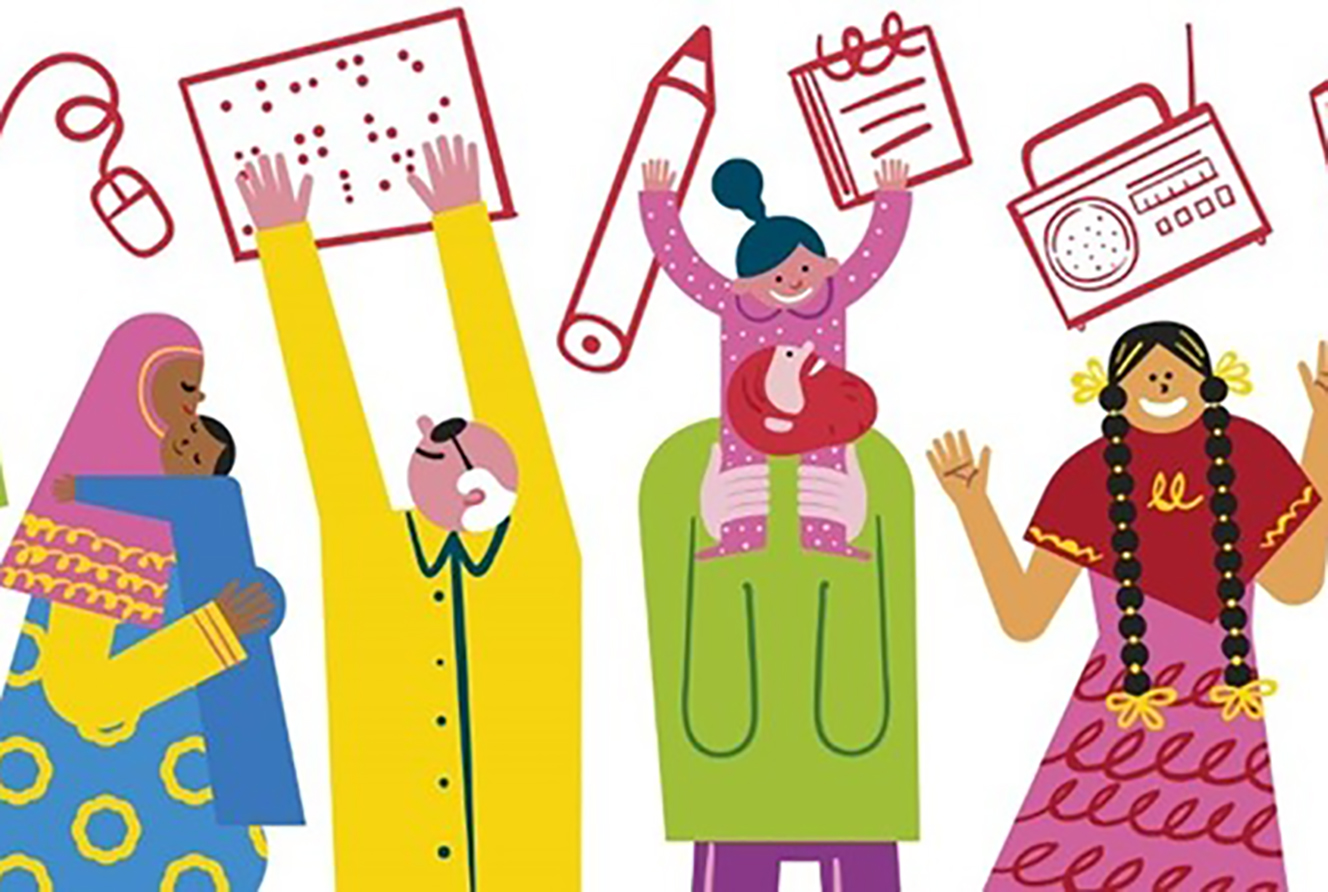
Over the past decade, investment in educational technology (EdTech) has grown exponentially. According to a report by Global Growth Insights, this sector reached a value of approximately $161.06 billion in 2023 and, if projections hold, it will reach $861.46 billion by 2032, with an annual growth rate of 20.48%. Behind these figures are governments, companies, and foundations betting on the digitalization of classrooms to improve educational quality and reduce learning gaps.
We know the story: following the pandemic, the proliferation of online platforms, artificial intelligence-powered applications, and virtual tutoring programs skyrocketed. Many schools transitioned to remote learning, revealing both the potential and the challenges of integrating technology into the curriculum. While some systems quickly adopted digital solutions, others faced serious infrastructure and access limitations. In this context, early literacy—an essential prerequisite for academic development—became the focus of many researchers seeking to understand whether technological tools truly make a difference.
Does Technology Really Improve Literacy? What the Evidence Says
To answer the question posed in this section, a team of researchers conducted a meta-analysis of 119 studies published between 2010 and 2023, all focused on evaluating the effects of various technological resources on reading and writing in primary school children. The purpose of this study was to examine concrete outcomes and estimate to what extent digital interventions impact three fundamental areas of literacy: decoding, reading comprehension, and writing.
This meta-analysis was based on a systematic review of international studies that met certain methodological quality criteria, such as representative samples and the use of standardized measurements. The researchers aimed to identify common patterns and differences based on factors such as the duration of the intervention, socioeconomic context, and individual student characteristics. As a result, the synthesis provides a comprehensive overview that allows teachers, families, and policymakers to assess the real usefulness of these tools.
Does Technology Really Improve Literacy? What the Evidence Says
To answer the question posed in this section, a team of researchers conducted a meta-analysis of 119 studies published between 2010 and 2023, all focused on evaluating the effects of various technological resources on reading and writing in primary school children. The purpose of this study was to examine concrete outcomes and estimate to what extent digital interventions impact three fundamental areas of literacy: decoding, reading comprehension, and writing.
This meta-analysis was based on a systematic review of international studies that met certain methodological quality criteria, such as representative samples and the use of standardized measurements. The researchers aimed to identify common patterns and differences based on factors such as the duration of the intervention, socioeconomic context, and individual student characteristics. As a result, the synthesis provides a comprehensive overview that allows teachers, families, and policymakers to assess the real usefulness of these tools.
Positive Findings: Technology Does Help, but Under Certain Conditions
What are the most relevant findings when analyzing more than a hundred studies on digital literacy? The central section of the study focused on three key skills for mastering reading and writing:
- Decoding: Statistically significant improvement. Decoding, which involves the ability to recognize letters, associate them with sounds, and automate word recognition, showed a significant improvement among participating children. On average, an effect size of +0.33 standard deviations was observed (a standard deviation—SD—is a measure indicating how much values in a dataset deviate from the average), signaling notable progress compared to those who did not use technology or followed traditional methods. Platforms that incorporated auditory reinforcement, repetition exercises, and clear visual representations contributed the most to this progress. A prime example is programs that allow students to hear word pronunciations while seeing the corresponding text on the screen, complemented by immediate feedback. These improvements were most evident in settings where platform use was consistent and accompanied by teacher guidance for daily practice.
- Reading comprehension: Moderate progress. Reading comprehension is a more complex process, as it integrates reasoning, the ability to make inferences, and connections with prior knowledge. In this area, participating children showed an improvement of +0.23 standard deviations—a significant gain, though not as high as in decoding. Here, technology enabled students to interact with digital texts enriched with audio, images, and links to definitions or explanations, which facilitated comprehension. But why was this progress lower than in decoding? One possible explanation offered by the meta-analysis is that reading comprehension heavily depends on the ability to relate the text to real-world contexts and personal experiences. This does not always happen if the platform limits itself to question-and-answer activities without allowing space for critical reflection. The most effective tools were those that provided exercises with progressively increasing difficulty and, when possible, included discussion forums where students could share their interpretations and receive feedback.
- Writing: The most significant improvement. Perhaps the most striking finding was the improvement in writing, with an impact of +0.81 standard deviations. This skill includes the ability to structure sentences clearly, use appropriate vocabulary, and adhere to spelling and grammar rules. Technology proved particularly beneficial in writing instruction thanks to automatic corrections and interactive writing exercises, which enabled continuous practice. Immediate feedback appears to be a key factor in this progress, as it motivates children to revise and refine their texts independently. However, is this enough to develop competent writers in the long run? Some studies suggest that, in addition to technological assistance, pedagogical support is essential to foster creativity and idea expression. Otherwise, there is a risk that students will focus solely on correcting mechanical errors without developing their own writing style or a deeper understanding of written composition.
Educational technology holds significant potential in early literacy, particularly in writing and decoding, but its success depends on strategic pedagogical integration. However, simply providing devices is not enough; planning activities, monitoring learning, and balancing digital interaction with personal reflection are also essential.
Limitations and Challenges: Not All Technologies Are Equally Effective
Despite the positive findings, the study also highlights key limitations and challenges that, for now, prevent educational technology from being a universal solution for early literacy. What are these limitations?
Lower Impact When Using Standardized Tests
When analyzing the effects of educational technology on standardized reading and writing tests, the results were less significant. The effects on decoding dropped to +0.23 SD, and on reading comprehension to +0.14 SD. This indicates that while students may improve in activities within digital platforms, these improvements do not always translate to external assessments. One possible explanation for this phenomenon is that children learn to navigate and respond within a digital environment but do not necessarily transfer those skills to paper-based reading and writing contexts or real-life situations.
Fewer Benefits for Students with Disabilities or Those Learning a Second Language
The study found no conclusive evidence that educational technology has a significant impact on students with special needs or those learning a second language. This may be due to the fact that many platforms are not designed with effective accessibility strategies, or that current tools do not adequately adapt to the needs of these groups. For example, for students with dyslexia or language processing difficulties, software should offer advanced customization, such as adapted text with specific fonts, text-to-speech features, or interactive feedback. However, these elements are not present in all platforms, and their effectiveness has yet to be sufficiently proven.
What Type of Educational Technology Works Best?
The meta-analysis examined four major approaches to using technology to strengthen childhood literacy. While each strategy showed benefits in different areas of learning, none provided a single solution that guaranteed absolute success. Instead, the results suggest that effectiveness depends both on the type of intervention and on how it is implemented within the educational process.
Behaviorism for Decoding
The behaviorist approach stood out for its effectiveness in word decoding, with an average impact of +0.33 standard deviations (SD). This type of program is based on repetitive practice and stimulus-response association, which facilitates letter and phoneme recognition in the early stages of learning. The most effective platforms provide immediate feedback as children associate sounds with images or complete structured word recognition exercises. However, despite their effectiveness in automating basic skills, these systems risk causing demotivation if they do not incorporate elements that connect learning to real-world situations. Excessive mechanization of the process can make the experience repetitive and less meaningful for children, which in the long run may affect their interest in reading.
Constructivism for Understanding
On the other hand, constructivist approaches showed an increase of approximately +0.23 SD in reading comprehension. Unlike behaviorist programs, these models emphasize exploration and discovery, allowing children to construct their own knowledge while interacting with texts in virtual environments. Their success lies in stimulating interpretative skills, helping children connect texts with personal experiences and develop deeper thinking about what they read. However, this model also has limitations. By focusing on global interaction with texts, it may overlook explicit decoding development, suggesting that its greatest potential is reached when combined with strategies that reinforce phoneme and word recognition.
E-books for Expanding Vocabulary
The use of e-books was identified as a resource with a positive impact on vocabulary expansion and fluency in reading short sentences. However, its effectiveness largely depends on interface design. While integrating text, images, and audio can make the experience more engaging and comprehensible, studies within the meta-analysis warned that excessive visual or sound elements can cause distractions and hinder children’s concentration. Overall, e-books seem to be a useful complement to the literacy process but not necessarily an alternative that can replace physical books.
The Effectiveness of Computer-Assisted Instruction (CAI)
Finally, computer-assisted instruction (CAI) emerged as the most widely studied resource with the highest degree of personalization. Its effectiveness is largely explained by its ability to adapt exercises to the student’s learning pace, enabling more individualized instruction. Additionally, by generating real-time data, these systems provide teachers with precise information about each child’s progress and specific difficulties. In terms of results, the meta-analysis revealed that improvements in writing were particularly notable with this type of intervention. The most advanced programs not only corrected spelling errors but also suggested sentence reformulations, contributing to greater accuracy and clarity in written expression.
Digital Divide: Does Technology Reduce or Widen Inequalities?
One of the key goals of technology in education is to reduce the learning gap between students from different socioeconomic backgrounds. The meta-analysis suggests that educational technology can be beneficial for students from disadvantaged backgrounds, but only under certain conditions.
When Does It Help?
- When combined with teacher support and complementary materials.
- If designed to be inclusive and accessible.
- When it provides access to high-quality educational content in resource-limited settings.
When Can It Widen Inequality?
- If students lack regular access to devices or an internet connection.
- When teachers are not prepared to integrate technology into the classroom.
- If digital tools do not address the needs of students with learning difficulties.
In this sense, technology is not automatically a bridge to educational equity. Without a clear and equitable implementation strategy, it can deepen disparities rather than reduce them.
Technology with Purpose: Beyond Simply Using Devices
Educational technology holds significant potential in early literacy, particularly in writing and decoding, but its success depends on strategic pedagogical integration. However, simply providing devices is not enough; planning activities, monitoring learning, and balancing digital interaction with personal reflection are also essential.
Technological advancements bring new opportunities with more versatile devices, artificial intelligence applications, and online learning communities. However, success in literacy will depend on equitable access and teacher training. Despite enthusiasm for innovation, education still requires a human and flexible environment, where technology serves as a complementary resource rather than a replacement for the pedagogical process. The decisions made today will determine whether digital advancements can close gaps or perpetuate inequalities, leaving open the critical question of whether digital literacy will ever truly provide equal opportunities for all children.






